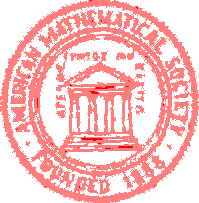Computational science
Research Article
Simulation the Behavior of a Two-Level Quantum System Using Scalable Regular Grids
Anatolii Dmitrievich Panferov , Natalia Vladimirovna Posnova, Anastasia Alekseevna Ulyanova
, Natalia Vladimirovna Posnova, Anastasia Alekseevna Ulyanova
Saratov State University, Saratov, Russia
 panferovad@sgu.ru panferovad@sgu.ru |
Abstract. The paper demonstrates a method for constructing a grid with a changing scale for modeling the behavior of a two-level quantum system. The method was proposed and implemented in relation to the problem of reproducing the behavior of graphene in external electric fields using the quantum kinetic equation. A direct numerical solution of the kinetic equation makes it possible to accurately and completely reproduce the behavior of models of this type. But a large amount of computation is required for a good quality reproduction of the observed parameters. The complexity of the problem is directly proportional to the number of grid nodes in the two-dimensional space of states, in each of which a system of ordinary differential equations is solved to reproduce the evolution of the population of the upper energy level. The study of the behavior of the model made it possible to develop and implement an economical procedure for constructing a computational grid, which ensures the localization of the region of formation of excited states and exact reproduction of the observed process parameters. (In Russian).
Keywords: numerical simulation, graphene, charge carrier distribution function, optimal choice of computational grid
MSC-2020 65M50; 81T10, 81T40
65M50; 81T10, 81T40
Acknowledgments: The study was supported by a grant from the Russian Science Foundation No. 23-21-00047
For citation: Anatolii D. Panferov, Natalia V. Posnova, Anastasia A. Ulyanova. Simulation the Behavior of a Two-Level Quantum System Using Scalable Regular Grids. Program Systems: Theory and Applications, 2023, 14:2, pp. 27–47. (In Russ.). https://psta.psiras.ru/2023/2_27-47.
Full text of article (PDF): https://psta.psiras.ru/read/psta2023_2_27-47.pdf.
The article was submitted 20.02.2023; approved after reviewing 12.05.2023; accepted for publication 04.06.2023; published online 07.07.2023.


